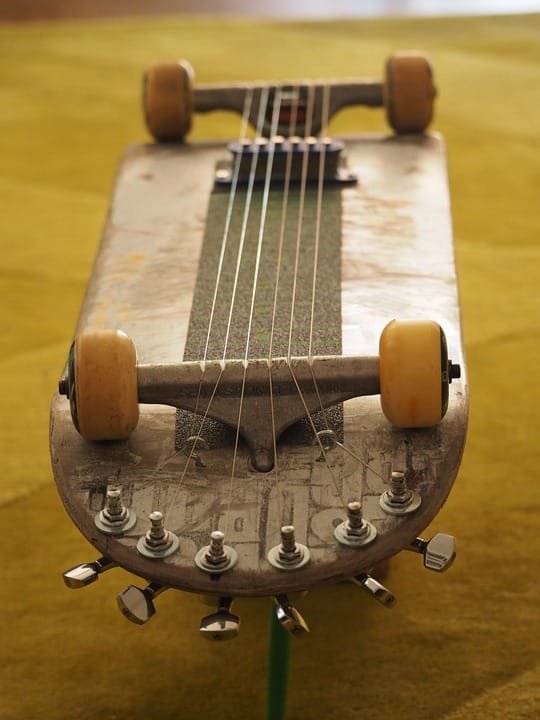Discover the Joy of Sustainable Fashion: Turning Trash into Treasure in Thrift Shops
As I stand in front of the thrift store, surrounded by racks of discarded clothing, I’m reminded of the staggering statistics: the fashion industry is responsible for 10% of global greenhouse gas emissions, and the average American generates 82 pounds of textile waste per year. It’s overwhelming, but also a wake-up call to make a change. In this article, I’ll share my journey into sustainable fashion, from discovering eco-friendly brands to finding creative ways to upcycle and repurpose old clothes.
The Dark Side of Fast Fashion
Fast fashion, characterized by trendy, affordable clothing with a short lifespan, has become the norm. But the consequences are devastating. The production and disposal of fast fashion lead to:
- Pollution: Toxic chemicals used in manufacturing and dyeing processes contaminate waterways and soil.
- Waste: Over 12.8% of global greenhouse gas emissions come from textile production and disposal.
- Exploitation: Sweatshop labor, poor working conditions, and unfair wages plague the industry.
The Power of Sustainable Fashion
Sustainable fashion, on the other hand, prioritizes eco-friendly materials, slow production, and upcycling. It’s not just about saving the planet; it’s about expressing yourself authentically and standing out from the crowd.
Eco-Friendly Materials
Look for brands that use sustainable materials, such as:
- Organic cotton: Grown without toxic pesticides or synthetic fertilizers.
- Recycled polyester: Made from recycled plastic bottles or post-consumer waste.
- Hemp: A durable, eco-friendly alternative to traditional fabrics.
Slow Fashion: The Antidote to Fast Fashion
Slow fashion encourages mindful consumption, repair, and repurpose. By adopting a slower pace, you’ll:
- Reduce waste: Extend the life of your clothes through mending and alteration.
- Support local artisans: Encourage small-scale, sustainable production.
- Invest in quality: Prioritize durable, well-made pieces over trendy, disposable items.
Thrift Shopping: A Treasure Trove of Second-Hand Gems
Thrift shopping is a great way to find unique, one-of-a-kind pieces while reducing waste. Here are some tips to get you started:
- Research: Know what to look for, from vintage designer pieces to high-quality fabrics.
- Inspect: Check for stains, tears, and missing buttons before purchasing.
- Alter: Take your finds to a tailor or DIY alterations to fit and flatter.
Upcycling: Transforming Trash into Treasure
Get creative and turn old clothes into new, innovative pieces. Here are some inspiring examples:
- T-Shirt yarn: Turn old T-shirts into yarn for knitting or crocheting.
- Jeans jacket makeover: Upcycle an old jacket into a unique, one-of-a-kind piece.
- Fabric scraps: Use leftover fabric to create bags, accessories, or home decor items.
Maintaining Your Clothes: The Key to a Sustainable Wardrobe
To extend the life of your clothes, follow these simple tips:
- Wash less: Hand wash or spot clean delicate items to reduce wear and tear.
- Iron wisely: Avoid ironing high-heat settings to prevent damage.
- Store properly: Fold or hang clothes to prevent creasing and stretching.
Conclusion
Sustainable fashion isn’t just a trend; it’s a commitment to conscious living and self-expression. By embracing eco-friendly materials, slow fashion, and upcycling, you’ll not only reduce your environmental impact but also develop a unique sense of style.
Frequently Asked Questions
Q: How do I start a sustainable fashion journey?
A: Begin by researching eco-friendly brands, thrift shopping, and upcycling.
Q: What are some easy ways to reduce waste in my wardrobe?
A: Start by repairing and repurposing old clothes, and consider swapping with friends or family.
Q: Can I really make a difference with sustainable fashion?
A: Yes! Every small change, from choosing eco-friendly materials to upcycling old clothes, adds up to make a significant impact.
Call to Action
Join the sustainable fashion movement by making small changes to your daily routine. Start by thrift shopping, researching eco-friendly brands, and getting creative with upcycling. Together, we can reduce waste, promote slow fashion, and celebrate individuality.
Image Credits:








Leave a Reply